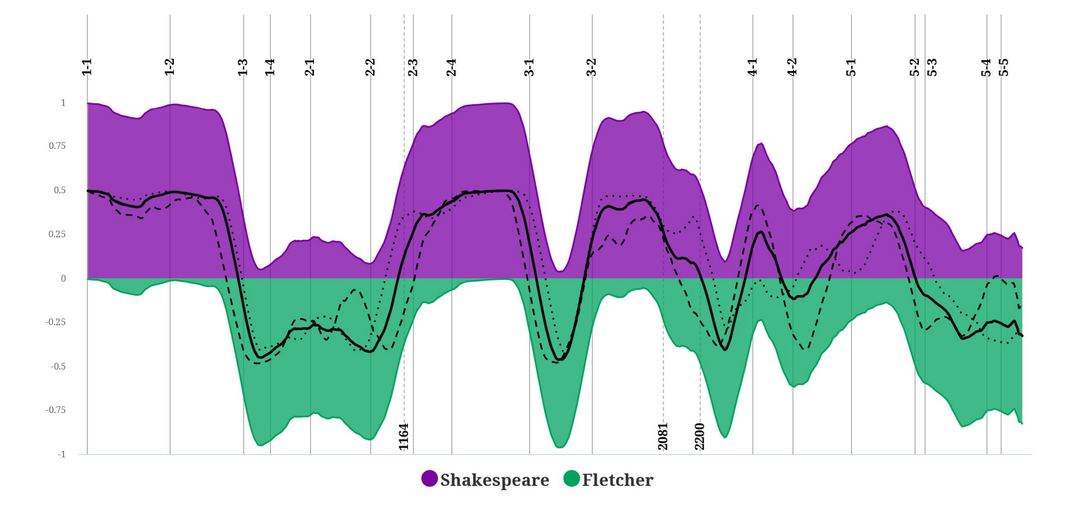Artificial Intelligence Reveals Second Playwright’s Contributions to Shakespeare’s ‘Henry VIII’
Scholars have long suspected the play, written in 1613, was a collaborative effort. Now, an algorithm has mapped out who wrote what
/https://tf-cmsv2-smithsonianmag-media.s3.amazonaws.com/filer/73/f5/73f5f982-5eba-45bd-a9d0-eacb54b9f7cd/untitled-1.jpg)
In the summer of 1613, an early performance of William Shakespeare’s Henry VIII—then titled All is True—found the Globe Theater packed with spectators. Cannon fire sounded as the play’s eponymous monarch walked onstage toward the end of the first act, captivating audience members to such an extent that they failed to notice a fiery prop landing on the theater’s thatched roof. Within an hour, the Globe had been reduced to ash.
New research suggests Shakespeare didn’t pen the history play-turned-tragedy by himself. Since literary analyst James Spedding first raised the possibility in 1850, scholars have speculated that Henry VIII was actually a collaboration between the Bard and John Fletcher, who succeeded Shakespeare as house playwright of the King’s Men acting company. Now, an algorithm created by Petr Plecháč of Prague’s Czech Academy of Sciences has revealed that the inflammatory cannon scene—and roughly half of the play—were likely written by Fletcher. Plecháč’s findings are published in the pre-print server arXiv.
“The scenes that are written by Fletcher are creaky,” Grace Ioppolo, a Shakespearean scholar at the University of Reading, told BBC News’ Tim Masters in 2015, when the rebuilt Globe Theater was preparing to host the play once again. “You can see in some scenes it doesn't have that Shakespearean touch that we are used to."
Researchers have used machine learning to identify distinguishing differences in authors’ voices before, according to a press release. Plecháč trained an algorithm to recognize Shakespeare’s and Fletcher’s writing styles by feeding it four of each playwright’s individual works. The algorithm learned to distinguish differences in the duo’s rhythm and word choice, and was then put to the task of combing through Henry VIII line-by-line.

“This turned out to be a very reliable discriminator for both authors’ styles. When applied to the text of Henry VIII, the result clearly indicated that both authors were involved,” Plecháč tells the Guardian’s Alison Flood.
As Flood notes, the algorithm even ruled out another speculated collaborator: playwright Philip Massinger.
The new study visualizes the algorithm’s analysis as a purple and green graph. Shakespearean qualities appear above the mid-line in purple, and qualities associated with Fletcher show up below the line in green. Instead of limiting the assessment to an either-or distinction, the algorithm accounts for such factors as transitions and truly collaborative sections.
Per the paper, Shakespeare probably wrote the play’s first two scenes, while Fletcher took the next four. But starting at line 2081, the algorithm found that the playwrights shared writing duties—at least until line 2200, when the Bard’s voice returns to prominence.
This analysis provides granular evidence for co-authorship, but as Spedding noted in 1850, a gut feeling and close reading can also reveal shifts in style.
“There are certain scenes when you suddenly think ‘this is Shakespeare’—the writing is richer,” Mark Rosenblatt, director of the 2015 production, told BBC News at the time. “You feel you are in the hands of a truly great writer as opposed to a very fine writer.”